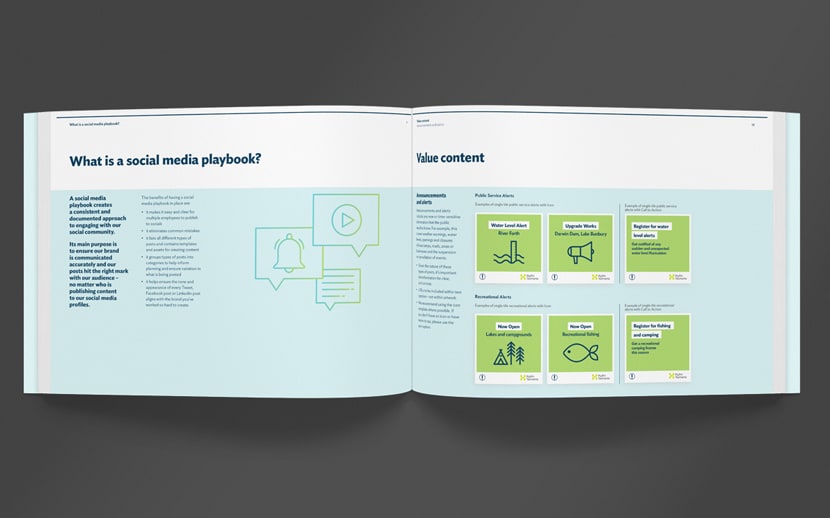Social media. Love it or hate it, it’s here to stay.
Not only that but it now forms a sizeable part of marketing and communication for businesses around the globe.
And while I’m relieved to have not grown up with the incessant and addictive nature of checking what Kim is wearing today or perusing the latest TikTok fad, I can still appreciate the enormous potential for businesses to connect and engage with audiences…that is, when it’s done well.
Emphasis should be placed on that last part. Having a proper social media strategy in place (versus posting ad-hoc memes that your bestie would love), is about more than just gaining likes. It is an extension of your business and brand and an effective method by which to reach, inform, entertain and influence you customers, clients and community.
So let’s take a dive down the rabbit hole for a moment and examine some key considerations of social media strategy and the benefits of creating a master Style Guide in which to house and communicate that strategy so there’s less ? and more ?.
⬇ Jump to our section on creating a Social Media Style Guide

A social media style guide produced for Hydro Tasmania by Celsius Design
Take Stock
Think of what social media accounts you have already. Now have a look at when you were last active on each one. If the post/video/tweet was more than six months ago, it would be wise to consider ditching it. Social media accounts mean exactly squat if you’re not being, well, social on them. Delete away – it will bring you joy, trust us (or at least trust Marie Kondo).
Channel selection
Considering what the right social channels are for your business is about considering who your current and potential customers are. If you haven’t already, you might consider creating customer profiles for your top or desired customers and then look at the data on what social channels these customers are using most, taking into account age, demographics, geography, interests and so on.
Also consider the type of industry you’re in. Twitter for example has a strong emphasis on news, current affairs and politics so if your organisation involves products or services that pertain to these things – or you simply want to talk about how irritating your Local MP is – then Twitter may be a good one for you.
The type of content these channels host is also important to think about. YouTube is synonymous with video and therefore a great channel to utilise if you’re a company selling caravan parts for example and your customers are looking for upgrades or modifications for which you can provide instructional videos.
Know your limits
Perhaps the biggest consideration of all is what your organisation is capable of and willing to invest time in. A social media account is only valuable to your business if it is active and most beneficial (in terms of driving engagement and leads) if it is well managed. Generally this means that one or more persons must take on the role and responsibility of creating content and maintaining the channel.
Creating Content
In the past few years, there has been an explosion of companies who provide ideas for social media content. Many of them have a ‘free’ content calendar you can download, often at the expense of a bombardment of DM marketing in your inbox.
While there are some useful tools to be found here, none of them are curated for your exact business. They don’t take into account your brand, values, business objectives, tone of voice… As with most things, the devil is in the detail and the detail for a social media strategy links back to all of these things.
Focusing on this for a moment, a good content mix is nearly always made up of three types of content:
- Value Content. This is content which informs and educates like company announcements, educational tips or competition.
- Connection Content. This is content which entertains, inspires, tells stories, goes behind the scenes, such as staff and community profiles.
- Promotional Content. This content showcases major projects, products and services.
A general rule of thumb is to try and achieve 80% of value and connection content and 20% promotion.
Design Execution
With the effort and energy taken to conceptualise and curate a good mix of content ideas, it would be a waste not to bring it to life with good design.
Both the content and the execution of the content are of equal importance when it comes to social media. Why? Because if you have an outstanding design that doesn’t then deliver something of value, viewers feel let down. Conversely you can have a highly interesting story to tell but nobody will look at it if it doesn’t sell itself through design.
Design does not need to be complex; sometimes the simpler the better, but it should be considered and consistent. Like any other execution for printed collateral, signage, advertising – it is an extension of your brand and your organisation and should be treated thus.

Sample page from Hydro Tasmania Style Guide, compiled by Celsius Design
What is a Social Media Style Guide?
A Social Media Style Guide is – as the name would suggest – a guide to follow when planning, designing and posting content on behalf of your organisation to social media channels.
Within it are the tools and rules that will help keep your posts on-brand so that your social media audiences can instantly recognise when we are issuing an alert, running a competition, promoting a campaign or are simply showcasing the awesome work you do on a day-to-day basis.
Similar to a Brand Style Guide, it can be as minimal or comprehensive as you make it but it essentially contains information about the following:
- Business and communication goals
- Understanding our social channels
- Captioning: voice and tone for social media
- Hashtags, Emojis, tagging and crediting
- Types of Content
- Types of Posts
- Timing and Frequency
- Design specifications and templates
- Tools and Resources
Why create a Social Media Style Guide?
Because…
- having a guide at your fingertips minimises the brain ache many get when trying to drum up content. Having it written in front of you makes it easy to identify that mix of different content and prompts ideas for posts.
- it houses the design specs and templates relating to different types of posts, eliminating the fuss of creating things from scratch and ensuring brand consistency.
- any and every person who is charged with managing your socials is working from the same document. This is especially important for companies that might experience high staff turnover or where socials are managed by more than one person.
In a nutshell, creating a social media style guide just makes good sense for both your brand and your business.
Where to start?
Likely you’ll have more knowledge to put this together than you may think. And much of it does need to come from you – in terms of considering your business objectives and your brand.
Getting it all down on paper in the form of a Style Guide helps to make sense of what those things means when it comes to planning and executing a social media strategy.
Being brand experts, we strongly advise the use of a professional designer (we know some good ones ?) to help you craft the templates and tools you’ll need to execute your content. This lays the foundation for all that you’re putting out there into the universe and you want it to look great. Originals designs and assets can be implemented into programs such as Canva for ongoing internal use – this can be helpful (even advisable) if you don’t use design software.
Wrapping up
So if you’re currently pondering your social state (erm…your work one that is), consider engaging a professional to help you create a Social Media Style Guide to bring clarity and purpose to your activity in this space.
If nothing else, it will free up time for the more important things in life.
Like scrolling through your socials ?
If you’re looking to sort out socials for your business in 2022, feel free to get in touch with us and we can take you through some sample Social Media Style Guides we have produced here at Celsius.